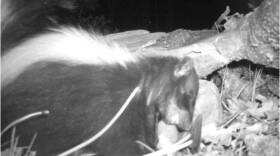Each year across the nation, including the Four Corners states, several hundred volunteers brave freezing January temperatures to count bald eagles. They hunker down on lakeshores peering through spotting scopes, drive standard survey routes clutching binoculars, some even observe from boats and planes.
The effort arose after Rachel Carson’s 1960s book “Silent Spring” alerted people that the pesticide DDT was causing reproductive failure among certain birds. Populations of bald eagles especially were crashing. Eventually DDT was banned, and in 1978 bald eagles were listed as an endangered species.
In 1979 the National Wildlife Federation began to sponsor the midwinter bald eagle count across the lower 48 states to see how the birds were faring and identify important wintering areas where they could catch fish.
Many years of data from those counts has shown most bald eagle populations are recovering. Between 1986 and 2010, the number of eagles wintering in the Northeast increased nearly 4 percent each year.
But in the Southwest, winter eagle populations declined more than 2 percent a year. That decline persists, possibly due to warmer winters, which means the birds don’t have to fly as far south to find unfrozen water for fishing. Dropping levels in lakes and streams, and increasing human populations, may also play a part.
The U.S. Army Corps of Engineers now coordinates this big citizen science effort in partnership with the U.S. Geological Survey—an effort that’s produced vital long-term information to help conserve our nation’s symbolic bird.
Local Audubon Society chapters can provide information about volunteering for the midwinter surveys.








